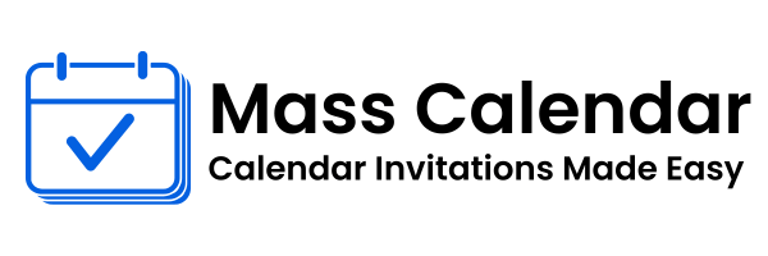How to Coordinate Events with Bulk Calendar Planning
In today’s hybrid work culture, staying on schedule is more challenging and more important than ever. Teams are global, meetings are virtual, and time zones vary widely. So how do event planners, project managers, or team leads handle scheduling for dozens or even hundreds of attendees?
BLOG
7/29/20252 min read


In today’s hybrid work culture, staying on schedule is more challenging and more important than ever. Teams are global, meetings are virtual, and time zones vary widely. So how do event planners, project managers, or team leads handle scheduling for dozens or even hundreds of attendees?
The answer lies in bulk calendar organization.
The Rise of Large-Scale Meeting Scheduling
Whether it’s a product launch, virtual training, or town hall, the need to send bulk meeting invites in Outlook or trigger a mass calendar invite in Gmail has become standard.
Calendar systems now offer robust tools to simplify this process. But to make the most of them, it helps to understand how they work and what best practices to follow.
Planning Bulk Calendar Schedules Step by Step
Gather Attendee Info
Start with a spreadsheet listing all participant names and emails. Label columns for segmentation if you need to invite groups to different sessions.Choose a Platform Based on Audience
Use Outlook if most attendees are corporate users.
Choose Google Calendar for open, public-facing events or Gmail-based audiences.
Use Groups and Lists for Efficiency
Instead of entering each email manually, use a Google Group or Outlook Distribution List to send mass meeting invites in Outlook or Gmail.
Best Practices for Mass Calendar Invites
Include All Meeting Details
Make sure every calendar event includes the location (physical or virtual), links, agenda, and duration.Create Recurring Events When Needed
If your event spans multiple days or weeks, set up a recurring event to avoid manual repetition.Avoid Double Booking
Before sending mass calendar invites in Google, cross-check participants’ availability using scheduling tools.
Troubleshooting Common Issues
Calendar Conflicts
Encourage attendees to accept or decline quickly, so you can resolve overlapping meetings early.Email Bouncebacks
Always verify email lists before hitting "Send," especially when issuing multiple calendar invites in Outlook.Incorrect Time Zones
Set the calendar event time zone to UTC or the event’s local time, and clearly state it in the event notes.
Advanced Tips for Seamless Planning
Segment your bulk calendar invites by role (attendees, speakers, moderators)
Use calendar placeholders (e.g., “Hold for Kickoff”) before finalizing invites
Utilize RSVP confirmations to plan room capacity or virtual bandwidth
Conclusion
Organizing events at scale doesn’t need to feel chaotic. Leveraging bulk calendar scheduling tools and following best practices allows you to reduce stress and deliver consistent communication. Whether you're handling mass calendar invites in Google or trying to send bulk meeting invites in Outlook, clarity and consistency are key.
With a little planning, your calendar can become the most powerful tool in your event planning arsenal.
MassCalendar.in
Send Bulk & Mass Calendar Invites Instantly
CONTACT
Meetings
+44 (0) 203 916 5117
© 2025. All rights reserved.
Help?
